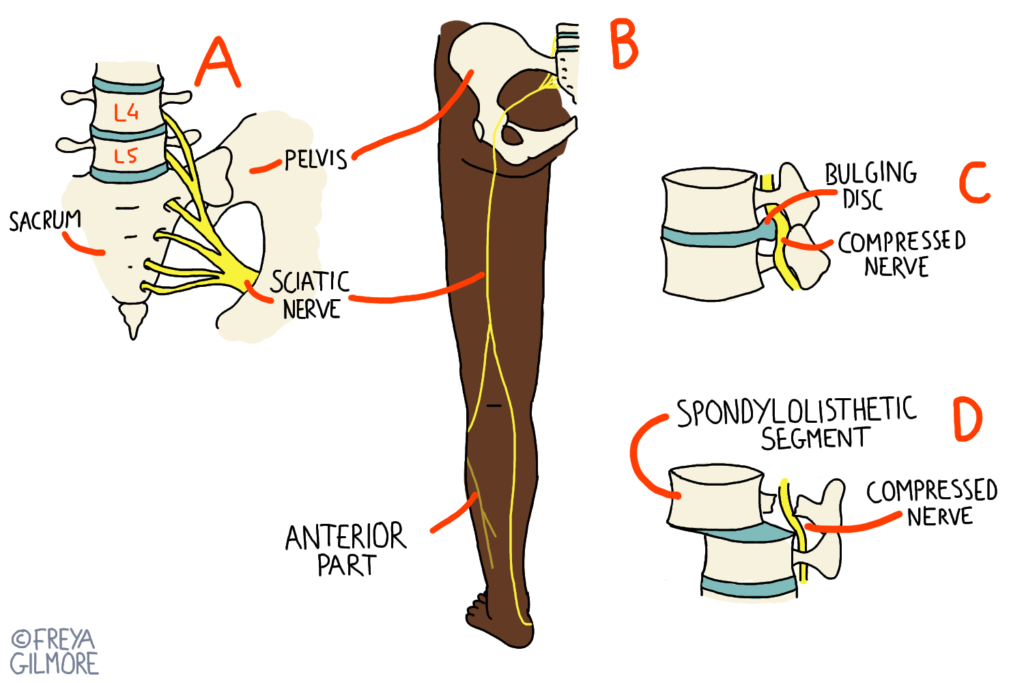Sciatica is a common cause of pain the the leg. Pain is caused by irritation of the sciatic nerve, which runs from the lower back into the buttock, back of the thigh, then onwards down the calf and into the foot.

Symptoms do not always appear along the whole length of the nerve. Often they are limited to just the thigh, and may be mistaken for a muscle injury. As the nerve is the cause, there are some expected symptoms that can help to differentiate sciatic pain from another cause:
- pain that is sharp and shooting
- pain that feels deep and “toothachey”
- pins and needles along the course of the nerve
- numbness or weakness in the same area
Causes of Sciatica
We often associate sciatica with lower back pain, but other issues can feed into the symptoms too.
Sometimes, the nerve is irritated by a tight muscle. One deep muscle in the buttocks (piriformis) is particularly prone to this, as the nerve runs very close to, or even through the muscle for some people. Tension in the muscle can irritate the nerve, causing further tension and leading to a cycle that is difficult to break. Fortunately, this is often responsive to osteopathic treatment. Especially if we can identify the underlying reason for the muscle tension: often an increase in exercise or new activity are the issue. We can give advice for managing your activity while symptoms settle down.
Sometimes, with or without back pain, a disc in the spine cause the sciatica. Patients often ask if an MRI or X-ray is needed to determine this. But your osteopath has a range of tests she can perform to identify the involvement of a bulging disc. Scans can be useful, but they also provide false positives: most people will have a bulging disc on MRI by the age of 40, but most people do not have symptoms.
A bulging disc can take a while to settle down, but it will not last forever. We work throughout the body to find areas of stiffness that may have led to overloading of the disc in question. We also work with you to ensure the painful area is moving well, and pain is not causing bracing or other restrictions.
When to be Concerned by Sciatica
Rarely, compression from a structure in the spine can cause Cauda Equina Syndrome (CES). Like sciatica, this is an issue with the nerves that exit the lower spine. But CES is a medical emergency. Compression to these nerves causes numbness and weakness in the legs, but also to the saddle area, which may go unnoticed until you go to the loo and wipe. If these nerves are compressed for too long, they can be permanently damaged, causing paralysis and bladder and bowel incontinence.
If your sciatica affects both legs, comes with altered bladder or bowel function, or numbness in the saddle area, seek urgent medical attention. Decompressive surgery within 6 hours is recommended for the best chances of a full recovery.
Click here to make an appointment with Beverley for your sciatica
